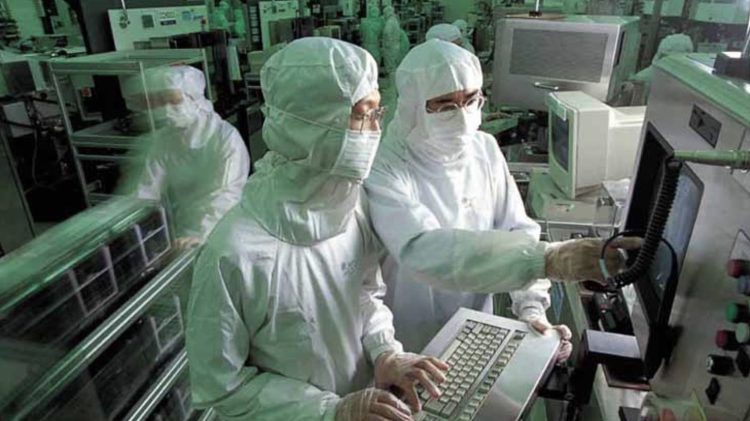Overall demand for semiconductors may be dropping somewhat in 2019, but key chip manufacturer TSMC is seeing increased demand for cutting-edge processors, thanks to sales of early 5G devices, and is preparing to roll out more advanced technology “a little” earlier than expected. That’s the news from the company’s latest quarterly earnings conference (via DigiTimes), where TSMC said its new 5-nanometer (nm) chipmaking process will begin volume production in the first half of 2020, enabling the first 5nm chips to hit stores by this time next year.
TSMC began mass-manufacturing 7nm chips only last year, enabling key customers Apple and Huawei to both claim they were “first” with the then-leading technology, though Apple’s A12 Bionic-series processors reached consumers first in the iPhone XS. The 7nm chips reportedly entered mass production in late May 2018, and Apple’s hit stores roughly four months later, a timetable that’s now likely to be repeated next year for A14 chips — as well as Huawei-built competitors.
Rather than shifting all of its production from the still-new 7nm process to the smaller 5nm technology, TSMC is expanding 7nm capacity to meet growing demand, particularly from makers of 5G wireless devices. Company CFO Lora Ho expects strong demand from 5G smartphone and base station makers, though not enough to completely offset slowing demand for older, larger pre-5G parts. TSMC now manufactures chips for giants like AMD and Intel, with Samsung as its largest and most advanced competitor.
As one of TSMC’s most aggressive customers, Apple has been expected to use TSMC-made second-generation 7nm chips in its late 2019 iPhones and iPads, shift to 5nm at some point in 2020, and then move to 3nm in 2022. In an industry where chip production delays do happen and can be ruinous, TSMC has remained remarkably on target with its process advances.
June 5th: The AI Audit in NYC
Join us next week in NYC to engage with top executive leaders, delving into strategies for auditing AI models to ensure fairness, optimal performance, and ethical compliance across diverse organizations. Secure your attendance for this exclusive invite-only event.
Beyond being physically smaller than their 7nm predecessors, 5nm chips can deliver greater power efficiency and/or more processing capability, depending on the needs of the chip designer. The 5nm process is expected to enable CPUs that previously fit into smartphones to shrink into wearables such as AR glasses and earphones while using smaller batteries and delivering previously unachievable experiences. It will also enable next year’s 5G devices to deliver as much or more power as today’s models while running cooler, with less energy consumption.

